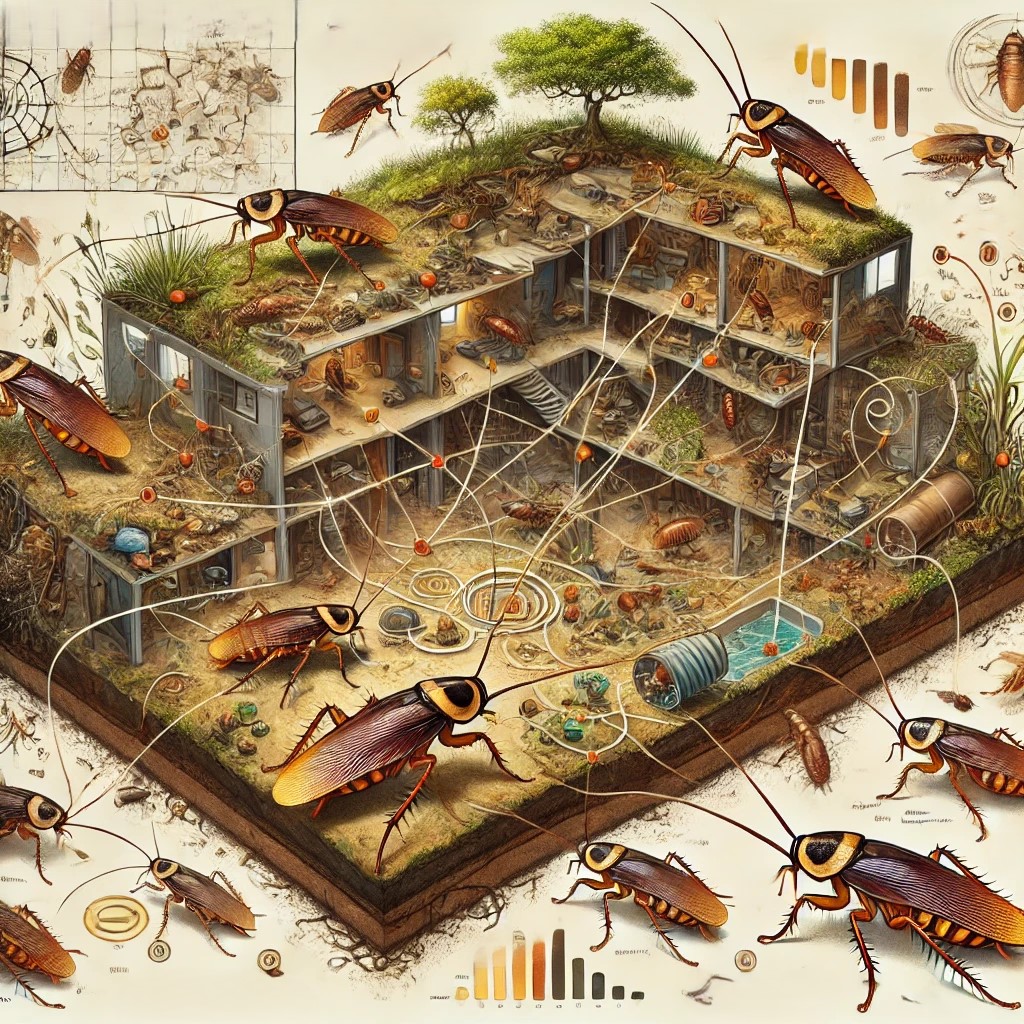
Cockroaches, those small and unyielding inhabitants of our world, are much more than simple solitary insects that hide in the dark. Although they are often perceived as independent pests, cockroaches exhibit a surprisingly complex and organized social behavior, revealing a unique social structure within their tiny world.
Despite the common image of cockroaches as creatures that only seek food and shelter individually, many species exhibit a social behavior known as gregarism. This behavior involves the tendency to live and move in groups. Cockroaches not only gather to take advantage of available resources, but they also communicate effectively with each other. They use chemical signals known as pheromones to communicate and coordinate their activities. These pheromones allow them to leave a trail that other cockroaches can follow, helping them locate food sources or safe shelters. This cooperative behavior is essential for their survival, as a group of cockroaches can find and exploit resources more effectively than a solitary individual.
Although they do not have a rigid hierarchical structure like that observed in bees or ants, cockroaches demonstrate a level of organization that allows them to maximize their survival opportunities. In certain species, such as the American cockroach (Periplaneta americana), leadership behavior has been observed within groups, where larger and stronger individuals tend to guide others to food or shelter sources. However, this “hierarchy” is neither strict nor permanent. Cockroaches are opportunists, and their social behavior is more flexible than that of other insect species with defined hierarchies. This means that if a dominant individual is eliminated or weakened, another can take its place without significant conflict.
Another interesting aspect of cockroaches’ social behavior is the interaction between different generations. Young cockroaches, known as nymphs, tend to stay close to adults, which allows them to learn and benefit from the experience of the older members of the colony. This proximity also provides nymphs with protection and access to resources discovered by adults.
Moreover, in some species, such as the German cockroach (Blattella germanica), mothers take care of their offspring for a time after they are born, reinforcing social cohesion within the group. Although this care is not as prolonged as in other animal species, it is a clear indication of the importance of social bonds in cockroach survival.
Cooperation within cockroach groups also plays a crucial role in their ability to withstand external threats. When a cockroach colony faces dangers such as food shortages or pesticide use, effective communication and coordination among group members can make the difference between life and death. Cockroaches are known for their ability to quickly adapt to new conditions, and their social behavior is a key factor in this adaptability.
Cockroaches, often underestimated due to their appearance and habits, possess a social behavior that is surprisingly fascinating and complex. Their ability to communicate, cooperate, and organize within their groups is a testament to their incredible adaptability and resilience—traits that have allowed them to survive and thrive for millions of years. By better understanding their social structure, we can not only admire their natural ingenuity but also learn valuable lessons about the importance of cooperation and adaptation in survival.
This analysis of cockroaches shows us that, even in the darkest and least appreciated corners of nature, there are forms of life that have developed sophisticated social strategies that ensure their perpetuation. This is why, in the case of an infestation, it is always good to rely on an expert to help combat them. We offer our services if you need them, and you should also keep in mind that prevention is always the best tool to keep these insects out of our homes. These creatures, though small, are a brilliant example of how life can find ways to flourish even in the most adverse conditions.
